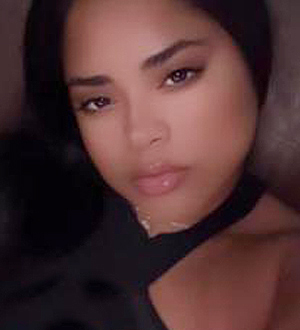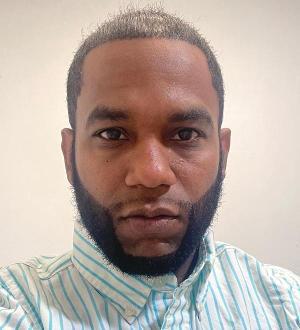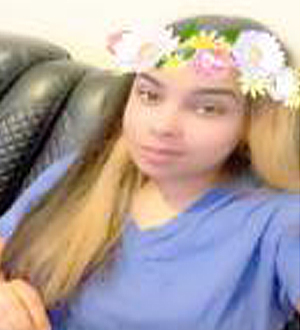Women in Antiquity
Course Info
Assignments
Content
Resources
Return to schedule of responses
Topic: The Female Pharaohs of Egypt
Due: Sun April 6
Prompt: What do you these images suggest to you about the ancient Egyptians, particularly in relation to gender?
Take a close look at these images from ancient Egypt. (You can click on the image to open it in a new window.)
Egypt Nobleman and his wife, Egypt, Old Kingdom.
5th Dynasty, 2494-2345 BCE.
Egypt Colossal statues of Old Kingdom pharaohs at Luxor, capital city of Upper Egypt.
Egypt Seated Statue of the female pharaoh Hatshepsut.
ca. 1479–1458 BCE.
Egypt A detail from the throne of Tutankhamun which shows the pharaoh with his wife Ankhsenamun.
ca. 1327 BCE, National Museum, Cairo.
Egypt Bust of Nefertiti, the Great Royal Wife of Egyptian pharaoh Akhenaten
1345 BCE.
Egypt Queen Nefertiti (right) being guided into the afterlife by Isis and Horus (center) and welcomed by Maat (left), goddess of balance and order.
Tomb of Nefertiti, ca. 1255 BCE.
Egypt Egyptian tomb painting of Anubis assisting the dead.
For your online response this week, choose at least one image. Focus on the image you’re most interested in and write a post that includes the following:
- What detail in particular jumps out at you as you look at this image?
- What the image suggest anything to you in relation to gender as it was understood among the Egyptians, if anything?
- What do you think the artist was trying to communicate?
- What would you like to find out more about?
Responses for Week 9
Response for Week 9
 Mark Wilson
1233
Mark Wilson
1233
2025-03-29 20:55:43
Hey folks! A change of pace this week as we react to images from ancient Egypt, a culture especially known for its visual self-representation. What do these pieces suggest to you about Egyptian culture, particularly in relation to gender?
Ancient Egypt
 Andrea Palacio
1450
Andrea Palacio
1450
2025-05-12 03:26:23
The images above suggest two things to me the first emphasizes how important spirituality and rituals were to the Ancient Egyptians the second is how forward thinking they were when it came to gender roles. In Egyptian society as presented in the images women were not limited to how they could contribute to Egyptian society as we can see a female Pharaoh above. They treated women in their society as partners and respected their contributions.
The Female Pharaohs of Egypt
 Nalu Cabrera
1336
Nalu Cabrera
1336
2025-04-23 22:03:06
Hello Professor and Classmates,
As I look at the image of the Egyptian nobleman and his wife from the Old Kingdom, a detail that as soon as seen jumps out at me is the way that this couple is side by side with the wife’s arm gently placed around her husband. This picture can have many different ideas but to me personally, this picture shows how the women has a sense of power and authority over the man, especially considering how gender roles were typically strict in ancient societies. In this picture I also think the artist was trying to communicate not only the nobleman’s high status but also the significance of his partnership with his wife which shows the importance of coming together as partners. I would also like to learn more about how women of noble status were perceived and what roles they played in both the household and society during the Old Kingdom and how did they do this?
Week 9: Egypt, Nobleman and his wife, Egypt, Old Kingdom. 5th Dynasty, 2494-2345 BCE.
 Christopher Alvarado
1299
Christopher Alvarado
1299
2025-04-08 19:29:58
This statue of an Egyptian nobleman and his wife, outdated to the 5th Dynasty of the Old Kingdom (c. 2494–2345 BCE), provides a remarkable perspective on issues of gender in ancient Egypt; a perception of equilibrium and mutual respect between men and women, especially in the case of the elite. The woman is depicted beside her husband, almost the same size; her arm rests lightly on his shoulder, signifying closeness, support and an acknowledged partnership. It means not that she is secondary, or a diminished being, but rather that women were part of the family, and perhaps of the wider society, in roles that were visible and important. Men were often depicted as more physically powerful or assertive, while women were presented with a serene dignity; rather, they were framed as part of the more stable, nurturing and strong world of “the home.” This dovetailing of the feminine and masculine: both genders fulfilling vital roles in not only the family nonetheless greater society suggests something far less oppressive and more traditional as, truth be told, though patriarchal the gender roles were not absolute and more supportive and complimentary in nature as both genders held sway ζω?ς in the both the familial and social order. The statue communicates an ideal of coming together, of respect, even between husband and wife; it implies that women were not just companions in life, but integral partners in achievement, in life, in legacy.
Week 9
 Melvin Beltre
1286
Melvin Beltre
1286
2025-04-06 23:02:42
- What detail in particular jumps out at you as you look at this image?
What jumps out to me from closely observing these images is the attention to detail they put in when drawing, coloring, and sculpting. The fact some remained well intact and still look beautiful.
- What the image suggest anything to you in relation to gender as it was understood among the Egyptians, if anything?
From the images, I feel like women are portrayed as caring and loving. The reason I believe this is because in the 4th and 1st pictures, the 4th image looks as if the woman is taking care of her husband, and for the 1st image, she is locking arms with him.
- What do you think the artist was trying to communicate?
The artist probably tried to portray the importance of marriage and how marriages are healthy, as well as how women tend to be behind their husbands and take care of them when needed, as it’s their duty.
- What would you like to find out more about?
How did the artists back in the day get inspired? What drove them to do these pieces of art?
Week 9 Response
 Kujege Thiam
1284
Kujege Thiam
1284
2025-04-06 22:26:27
The image that I'm most interested in is the sculpture of the nobleman and his wife. This statue in particular stood out to me because of the wife's arm around her husband. Sculptures I've seen of other cultures depicting a couple tend to be the two standing side by side. Whereas this one features the couple closer together, and the wife holding on to her husbands arm. It feels particularly specific to include and makes the sculpture feel that much more intimate, and tender. I think marriage in the antique world was typically a union between two parties in which the benefit is financial, social, or political, for one or both parties. The idea that marriage comes from love is a noble concept, so to include a tender touch between a couple feels significant. Looking back at ancient Athens we learned that intellectual connection is meant to be between two men in the public space, and marriage was meant to produce children. This sculpture makes me think in the ancient Egyptian world that isn't the case, I feel it suggests that marriage is recognized as a connective bond in which both parties are companions to one another. I'd like to imagine this sculpture might have been commissioned by the couple, and the sculptor decided to include this to show their bond. I do notice the coloring on the husband, and can see he is lighter in color than his wife, I know in some cultures paleness is considered desirable in women, I wonder if this is also the case here? I also wonder where this sculpture would have been situated? Is this a decorative item for a home, or was it a casual project by an ancient artist?
Throne of Tutankhamun
 Yeili Lainez
1280
Yeili Lainez
1280
2025-04-06 20:49:56
I chose this image because it shows a man seated and a woman serving him. This has been a theme thus far in the many cultures and art forms and religions that we've studied thus far. In many ways Egyptian women were extremely powerful, yet still in this scene, you have a symbolic and physical representation of a man being higher in status than a female. This is shown is by the fact that the man is seated, and the woman is still standing and appears to be accommodating or soothing the man, as if it were her duty. This could suggest in many ways, that the gender roles in Egypt were for men to lead and women to treat and serve (for the most part).
The detail that struck me was the fact that she looks concerned and has a posture that displays care and purpose, but he seems completely aloof and is not even paying her any mind. His arm and torso are even leaning away from her. The artist is communicating that women, reach out, console, provide comfort, while the man sits back and is taken care of. I would like to find more about the woman pharaoh and how she was taken care of, and if it was by women as well.
Bust of Nefertiti
 Arlene Willock
1274
Arlene Willock
1274
2025-04-05 19:57:58
The details that jump out to me is the lifelike sculpture that is made of limestone that captures the beauty of an ancient Egyptian queen, it shows an elongated neck, high cheekbones and a serene face, her features are delicate arched eyebrows almond shaped eyes, missing a pupil, slightly parted lips, flat-topped blue crown adorned with golden band and a cobra symbol.
The image suggest to me the royalty expressed a blend of power and beauty in opposition in harmony, soft graceful features associated with femininity the crown she wears typically linked to pharaohs and authority figure it shows elegance and political significance, a commanding presence.
What the artist is trying to community is the grace and authority figure showing a beautiful woman in a powerful position, her humanity in the way her lips was slightly curve and strength in her posture, woman to be admired not just to be looked on but for the role she played. remember who I am that matter.
What I would like to find out more about is how long it took to make the sculpture, what was the artist thinking about when he was sculpting it. How did people see Nefertiti in her time, did they fear her or admire her.
Response for Week 9
 Francisco Baez
1270
Francisco Baez
1270
2025-04-04 22:32:43
I am impressed by how prominent women are in both creative and metaphorical realms when I look at these ancient Egyptian pictures. The idea that strong gods, such as Maat, the goddess of truth and balance, led Queen Nefertiti into the afterlife implies that women were not just props for men's lives but also important characters in religious and cultural myths. What does it imply for celestial entities to receive a lady in such a ceremonial way? It suggests a degree of respect that, in my opinion, runs counter to later Western perceptions of ancient women as being oppressed everywhere.
As I studied the bust of Nefertiti and the seated statue of Hatshepsut, I started to question whether these ladies were unique or part of a more significant cultural appreciation of femininity. Hatshepsut was a pharaoh frequently portrayed wearing stereotypically masculine attire, but her legacy endured decades of attempts to eradicate her. Similarly, Nefertiti's bust exudes elegance, wisdom, and power. These pictures pressed me to consider the complexities of gender in ancient Egypt. Was power correlated with gender, or was it independent of it?
In the image of Tutankhamun and Ankhsenamun, I was struck by the intimacy and equality between husband and wife. Their gestures suggest tenderness, not dominance. This leads me to think that ancient Egyptian art often portrayed gender roles not in strict hierarchies but in nuanced relationships. While not a modern feminist utopia, ancient Egypt seems to have embraced a richer and more symbolic gender dynamic than I once assumed. That complexity deserves closer attention in how we teach and interpret ancient civilizations. The portrayal of these characters might remind us that gender expression was more varied in the past than we usually give it credit for.
Response for Week 9
 Dania German
1269
Dania German
1269
2025-04-04 11:42:53
For your online response this week, choose at least one image. Focus on the image you’re most interested in and write a post that includes the following:
- What detail in particular jumps out at you as you look at this image?
The image I will be picking is the image of the nobleman and his wife in the Old Kingdom. The main detail that jumped out at me is how they are standing next to each other side by side. I also noticed their headwear is similar and the sculptures are in very good condition for being so antique. I also noticed they have similar facial features and expressions.
- What the image suggest anything to you in relation to gender as it was understood among the Egyptians, if anything?
The wife is holding her husbands arm which makes me think they got along well. It makes me think that wives can rely in their husbands as their support system. It also makes me feel like they are equal in relation to gender as they stand side by side.
- What do you think the artist was trying to communicate?
The artist was trying to capture the essence of an Egyptian partnership. They are equals in the marriage, the wife can lean on her husband for help, marriage can be happy and fulfilling for Egyptians.
- What would you like to find out more about?
One thing I would like to find out more about is how did they treat children. I noticed in Egyptian sculptures and art, not many children are portrayed. I would like to learn more about Egyptian family dynamics and how a regular family with children runs.
Queen Nefertiti being guided into the afterlife by Isis and Horus and welcomed by Maat.
 Emma Perez Sr
1268
Emma Perez Sr
1268
2025-04-04 00:33:34
Nefertiti being guided by three gods was the detail that particularly jumped out to me because I found it interesting that the gods play an active role in the royal family lives especially when facing death. The goddess Maat stood out to me with her big beautiful wings. What do her wings signify? I noticed in the image gender wise it’s mostly goddesses escorting Nefertiti. This image speaks volume since it includes a respected queen in her final moments. I think the artist was trying to capture and communicate Egyptian tradition and culture. Every culture has a different perception in death and after life. The image shows us a different point of view in the queen’s life. I would love to find out more about how the afterlife is Egyptian history? Being a royal do they prepare you for the afterlife? What does the hieroglyphics say in the image of Nefertiti being welcomed into the afterlife?
RE: Queen Nefertiti being guided into the afterlife by Isis and Horus and welcomed by Maat.
 Brenda Rodriguez Aguilar
1272
Brenda Rodriguez Aguilar
1272
2025-04-05 13:37:10
Hello Emma
I also very interesting to see others culture after life traditions and customs, especially Egyptian culture.
As a Mexican we have such uniquely specific traditions and beliefs on the after life.
I also pick Nefertiti because the guidance being through characters were so attracting to me to understand and I kind of compare with my culture beliefs on be guidance by special animals calls "Alebrijes".
RE: Queen Nefertiti being guided into the afterlife by Isis and Horus and welcomed by Maat.
 Brenda Rodriguez Aguilar
1273
Brenda Rodriguez Aguilar
1273
2025-04-05 13:37:10
PHA+SGVsbG8gRW1tYTwvcD48cD48L3A+PHA+SSBhbHNvIHZlcnkgaW50ZXJlc3RpbmcgdG8gc2VlIG90aGVycyBjdWx0dXJlIGFmdGVyIGxpZmUgdHJhZGl0aW9ucyBhbmQgY3VzdG9tcywgZXNwZWNpYWxseSBFZ3lwdGlhbiBjdWx0dXJlLjwvcD48cD5BcyBhIE1leGljYW4gd2UgaGF2ZSBzdWNoIHVuaXF1ZWx5IHNwZWNpZmljIHRyYWRpdGlvbnMgYW5kIGJlbGllZnMgb24gdGhlIGFmdGVyIGxpZmUuPC9wPjxwPjwvcD48cD5JIGFsc28gcGljayBOZWZlcnRpdGkgYmVjYXVzZSB0aGUgZ3VpZGFuY2UgYmVpbmcgdGhyb3VnaCBjaGFyYWN0ZXJzIHdlcmUgc28gYXR0cmFjdGluZyB0byBtZSB0byB1bmRlcnN0YW5kIGFuZCBJIGtpbmQgb2YgY29tcGFyZSB3aXRoIG15IGN1bHR1cmUgYmVsaWVmcyBvbiBiZSBndWlkYW5jZSBieSBzcGVjaWFsIGFuaW1hbHMgY2FsbHMgJnF1b3Q7QWxlYnJpamVzJnF1b3Q7LjwvcD4=
Reading Response #9 Queen Nefertiti
 Brenda Rodriguez Aguilar
1266
Brenda Rodriguez Aguilar
1266
2025-04-02 18:55:34
Good Afternoon
I picked Queen Nefertiti
- What detail in particular jumps out at you as you look at this image?
What caught my attention was the mix of colors presented in the image (painting) is very attractive. The clothes were also very interesting because they reflected the Egyptian style, the divinity of the characters as well as the symbols in the image.
By divinity I meant that the clothing is a representation of it. As we can observe the feathers, the mask, the hats and the tunics on the image.
- What image suggests anything to you in relation to gender as it was understood among the Egyptians, if anything?
It reflects the public representation of women in Egypt. As we discussed in class women could become a Pharaoh which highlighted the leadership of the females in Egyptian culture. We also discussed how women could earn property, get married, divorced as well as being in a powerful position. I think this image reflects that part. The description on the bottom of the image definitely gave me a clarity on recognizing the divinity of the characters as well as identifying the characters on the image.
- What do you think the artist was trying to communicate?
I think the artist wanted to portray the style of the Egyptian towards clothing, symbols, Gods and Goddesses, as well as the dynamics of the power in Egypt.
I also believe the images correctly represent the meaning of it.
- What would you like to find out more about?
It’s refreshing to know that it was a culture in the Ancient World where women were recognized as valuable in the public sphere, because in the past reading we could appreciate how women were completely capable of being in power. I would like to get deeper in why the Egyptians choose animals to represent the Gods and Goddesses instead of human representation. I wonder if due to that perception gender roles aren't classified as the Greek did. My theory is animals are not classified as less or more dangerous by gender, for example a Lioness is equal as dangerous as a Lion.
Cosplay in Egypt.
 Jairo Diaz Rodriguez
1264
Jairo Diaz Rodriguez
1264
2025-04-01 17:10:57
It’s impossible to ignore the ancient Egyptians obsession with headwear—every statue, every relief, every depiction, no matter the gender, features an elaborate crown, headdress, or some next-level headpiece. These folks didn’t just wear hats; they committed to them.
And then there’s the animal fascination. Whether it’s sphinxes, falcons, jackal-headed gods, or cat statues, it’s clear they took their love for animals to a whole new level. If modern Egyptologists rebranded it as “ancient cosplay,” I wouldn’t even be mad—it fits.
But honestly, when your civilization spans millennia, why wouldn’t you go all in on fashion and mythical mascots? Iconic behavior.
Ancient Egypt Photos
 Jenisis Ayala
1260
Jenisis Ayala
1260
2025-03-31 16:14:18
The Nefertiti bust is a true masterpiece. Her face is so realistic, with those high cheekbones and smooth symmetry, and her elongated neck adds a sense of beauty that’s almost dreamlike. The intricate headdress and smooth, high-polish show that the artist put a lot of care into making it. One thing that’s interesting about this bust is that it shows how important women were in ancient Egypt, especially royal women. Queen Nefertiti wasn’t just a wife; she was also a powerful leader during the Amarna period. Her proud style shows that she was respected and dignified, and there’s no sign that she was treated badly. This challenges the idea that ancient Egypt was a patriarchal society where women were treated badly. The artist probably wanted to show Nefertiti as a powerful and elegant woman. The bust is an idealized version of her, which makes her seem almost divine. Art in that time, especially during the Amarna period when they were trying to be more realistic, might have shown rulers and consorts as revered icons, not just political figures. Another thing that’s worth looking into is how much power Nefertiti had. Some historians think she might have been in charge after Amenhotep IV, as he was known to pass power on to his wives. If we could find any records or objects that support this, it would be really interesting to learn more about.